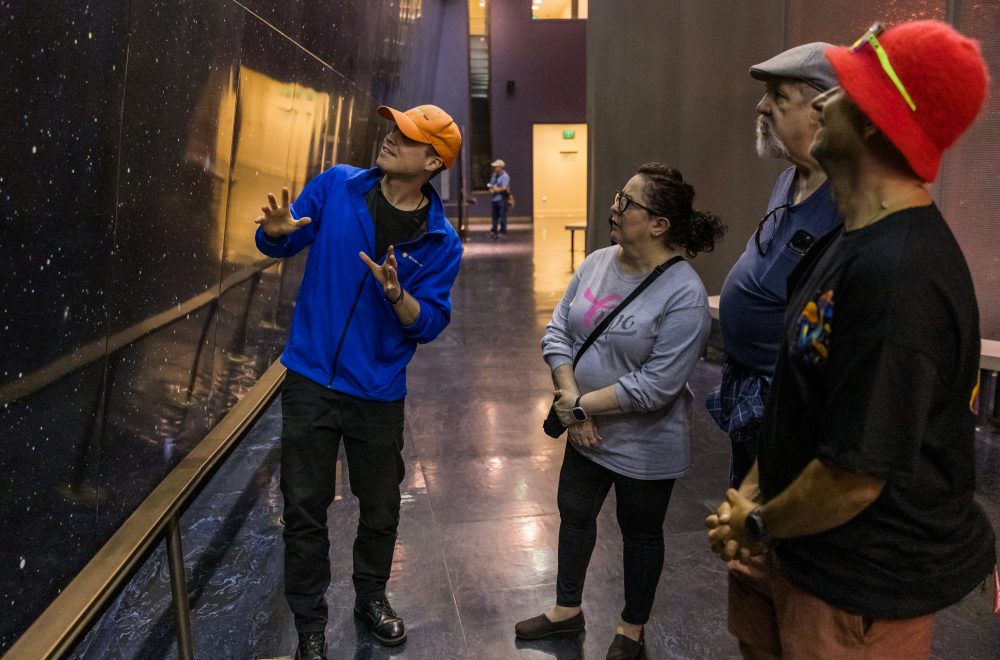
The Top Exhibits at Griffith Observatory You Can’t Miss
There’s a lot to see on a visit to Griffith Observatory, one of Los Angeles’s most famous landmarks.
Located just in front of the peak of Mount Hollywood, Griffith Observatory is affectionately known as the “hood ornament” of LA. The observatory sits prominently on the hills overlooking the Los Angeles basin. Its parapet, flanked by its east and west terraces, provides visitors with sweeping panoramic views from Mount Wilson to the Pacific Ocean. The views alone are enough to attract visitors from far and wide.
But while those pics will look great on your Insta, there’s a whole lot more to explore at Griffith Observatory. As an ExperienceFirst tour guide and planetarium show narrator at the observatory, I’ve seen pretty much every exhibit here, and I know the ones that you absolutely can’t miss — though they’re all good!
Of course, if you join one of our tours of Griffith Observatory, you can have an expert local guide explain each of these to you while you’re here, answering questions and sharing the stories that make this place really come alive.
So you can get excited about all the things there are to see, here are the top exhibits at Griffith Observatory in LA. I’ve numbered them for convenience rather than priority order. While this isn’t an exhaustive list of everything on offer at Griffith Observatory, it covers the top highlights you should check out to make the most of your visit.
1. Scale model of the Solar System
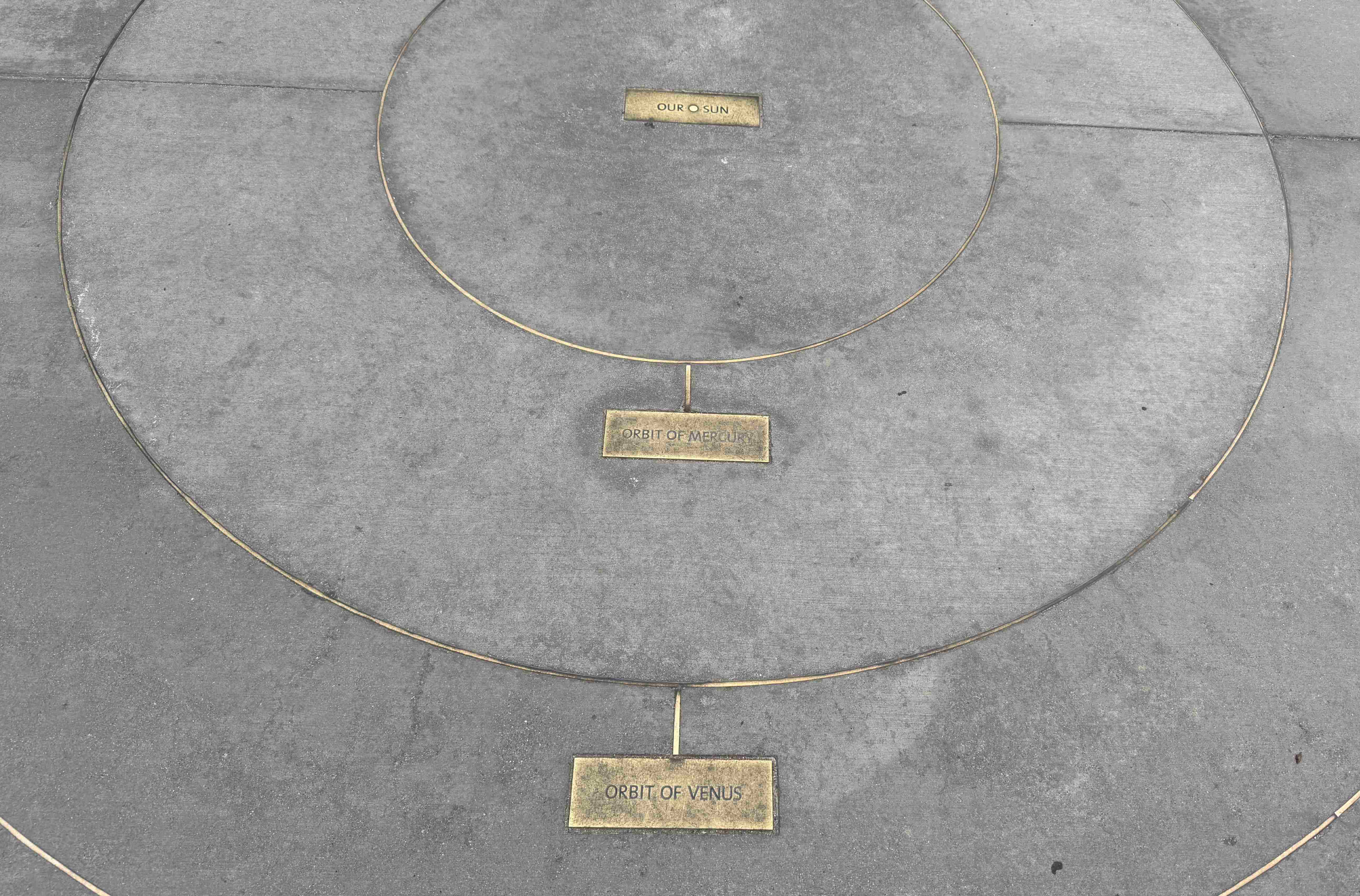
While an observatory’s main function is looking up, don’t forget to look down when you first arrive at Griffith Observatory. A scale model of our solar system is embedded in the sidewalks in front of the building. The sun, shrunk down to the size of a dime, is just in front of the main steps with the orbits of the four inner planets — Mercury, Venus, Earth, and Mars — plotted out within a few feet of each other.
The outer planets are farther away. Neptune, the farthest planet from the sun, has its orbit almost in the parking lot. And fans of Pluto fear not, while it has technically been reclassified as a dwarf planet in 2006, Griffith Observatory was built in 1935 when it was still considered a planet, so its orbit is still on the sidewalk.
2. Planetarium shows
The big dome in the middle of Griffith Observatory is the Samuel Oshin Planetarium. Three shows play throughout the day: Water is Life, Centered in the Universe, and Signs of Life, the newest addition.
Each show is about 30 minutes long and projected onto a 60-foot ceiling, or screen. The shows are narrated live and feature the mesmerizing Zeiss Mark IX star projector, which creates a stunningly accurate view of the night sky for a portion of each show. The rest is projected by the Digistar 7, capable of 8k resolution and 60 frames per second.
Learn more about what you can see in my guide to Griffith Observatory’s planetarium shows.
3. Foucault pendulum
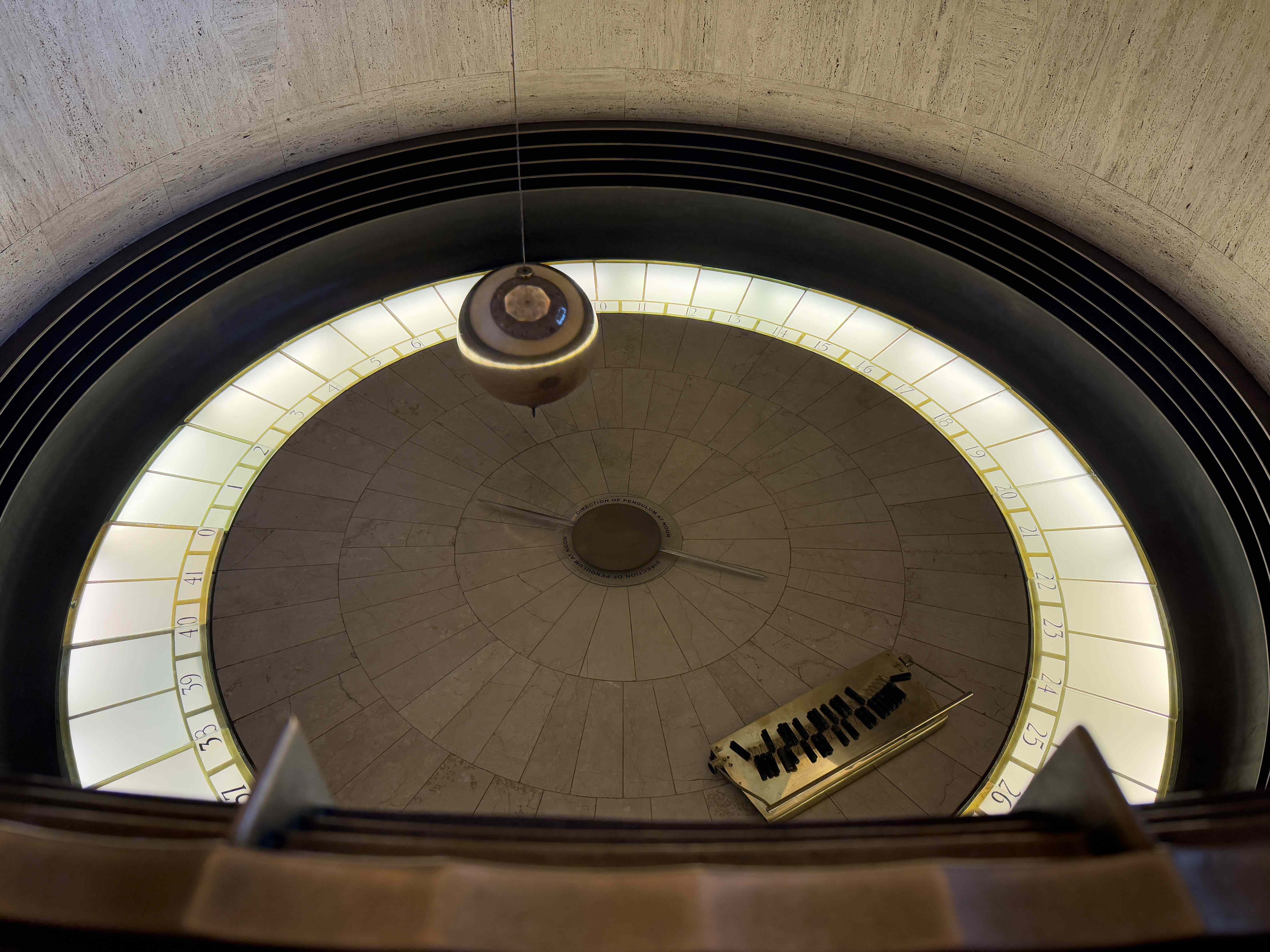
Today we all know that the Earth spins on its axis once every 24 hours, but before this was common knowledge, an ingenious method of proving this phenomenon was through the use of a Foucault Pendulum. Using electromagnetism, it functions much like a compass, seeming to make a 360 degree rotation every 41 hours.
But it isn’t the pendulum that is changing direction — it’s the Earth spinning underneath it that causes this illusion. It hangs from the ceiling in the main rotunda.
4. Tesla Coil demonstration
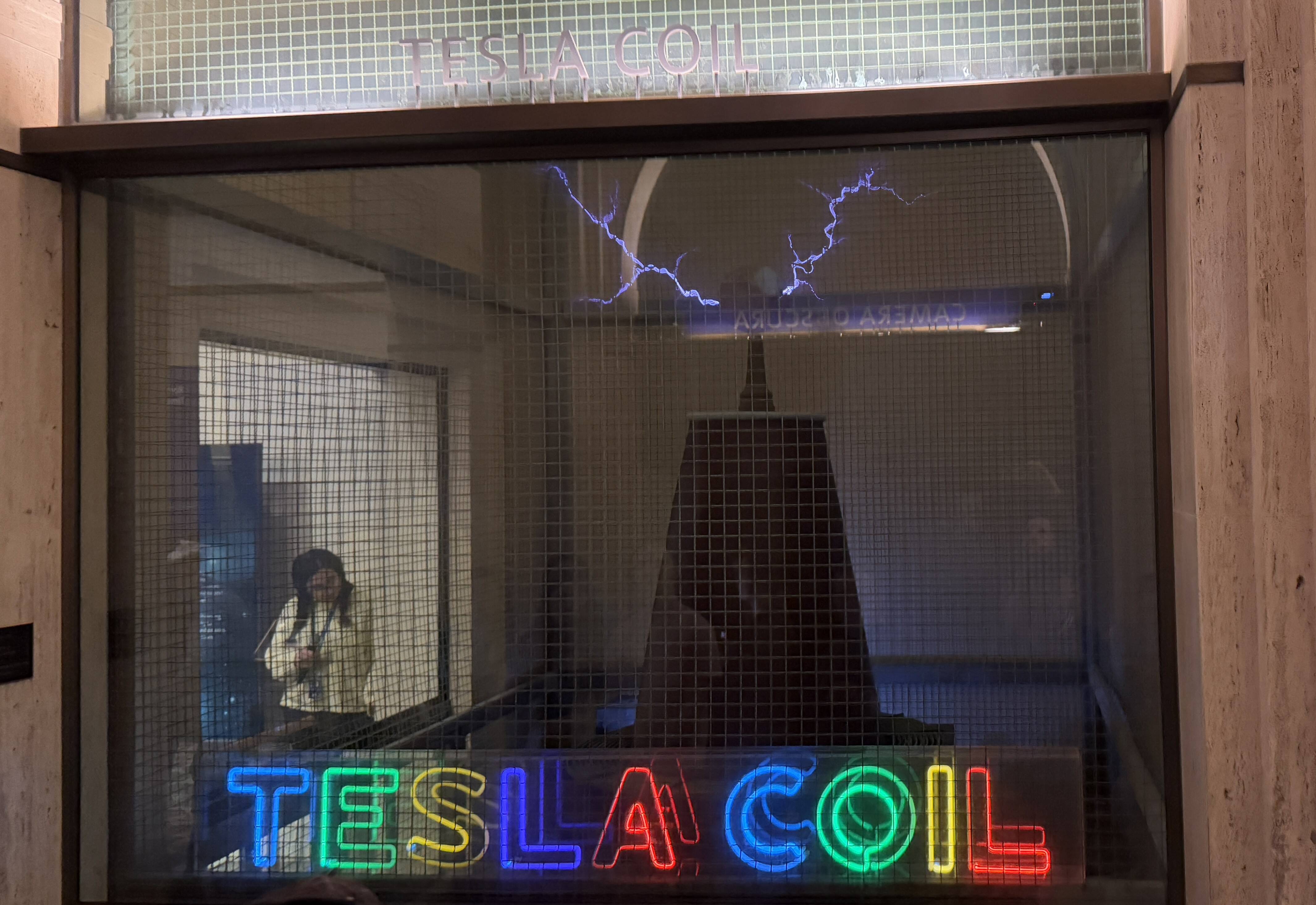
Want something high energy? How about a device that has 160 volts going in and 500 million volts coming out?
That’s what happens when Griffith Observatory’s Tesla Coil is turned on. Surrounded by a Faraday Cage which grounds the electricity, the result is a dazzling display of purple lightning. To prevent overheating it is only turned on about once every hour during a short demonstration.
5. Telescope of the night sky
If you’re at the observatory on a clear night don’t miss the opportunity to look through one of the telescopes. Griffith Observatory has several telescopes visitors can peer through and get a closer look at whatever is prominent in the sky that night, be it a planet, a star, or the moon. The main telescope, the Zeiss 12-inch refracting telescope, is located on the roof under the east dome.
It had its “first light” in 1934 just before Griffith Observatory opened its doors in 1935. Since then, millions of people have looked through the eyepiece over the decades, making it (unofficially) the most viewed through telescope in the world. The line opens on the roof at 7 p.m. each night. If the line seems too long, don’t worry — there are up to three other mobile telescopes that may be wheeled out onto the sidewalks on a given night, each with the same magnifying power as the one on the roof.
6. A 4.5-billion-year-old meteorite
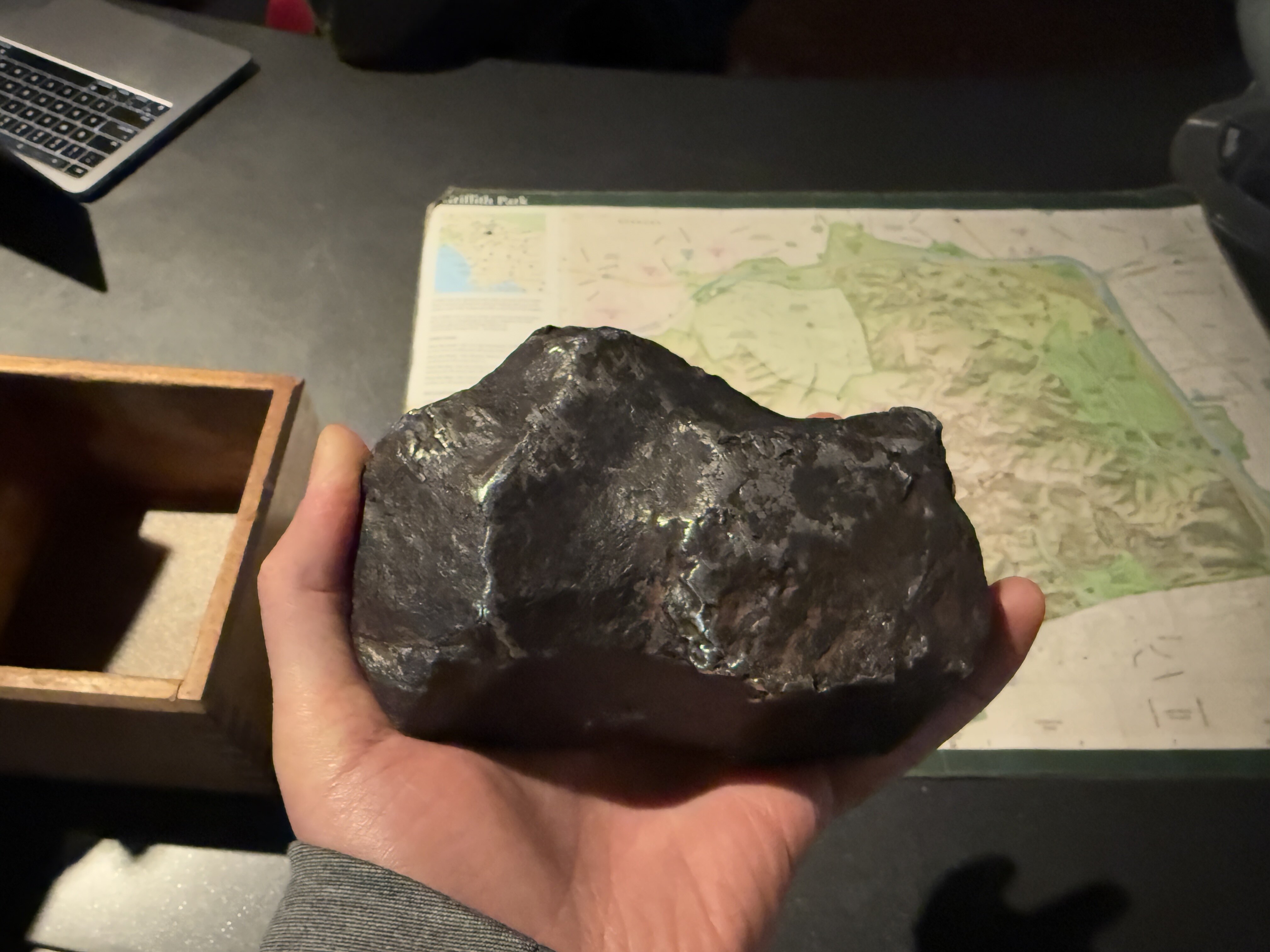
Downstairs just next to the gift shop and cafeteria, there is a desk usually with one or two museum guides sitting behind it.
Also behind this desk is one of Griffith Observatory’s best kept secrets. A small fragment of a meteorite that struck Earth 50,000 years ago. If you ask one of the museum guides behind the desk, they will take out the meteorite fragment so you can hold it in your hand.
It’s made of 92% iron (the rest is mainly nickel), so it’s pretty heavy for its size, about eight pounds. Uranium dating tells us it is 4.5 billion years old, which is the same age as the Earth. In fact, meteorites like this helped scientists determine the age of our planet.
7. A selfie with Einstein
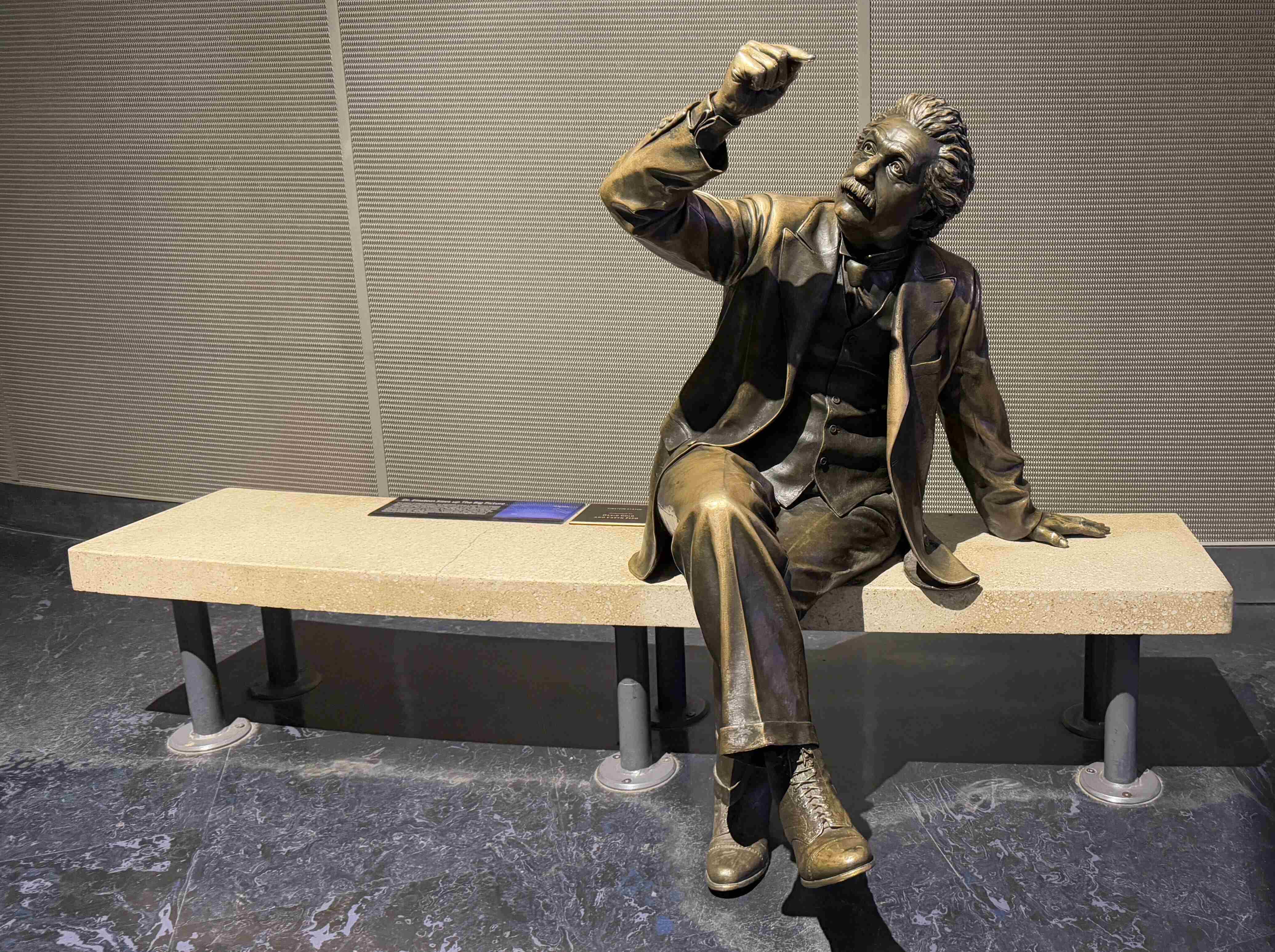
A favorite photo op for many Griffith Observatory visitors is one with them sitting on a bench next to a statue of legendary scientist Albert Einstein.
While it’s not surprising that the observatory has a statue of Einstein, you may be curious why he is posed the way he is, as if he’s looking at his index finger. The idea here is that he is looking at the night sky and contemplating what is behind his finger, which is only covering a small portion of the sky.
What is in that tiny bit of the sky behind Einstein’s finger? Everything you see in The Big Picture displayed on the wall that the statue is facing.
8. The Big Picture
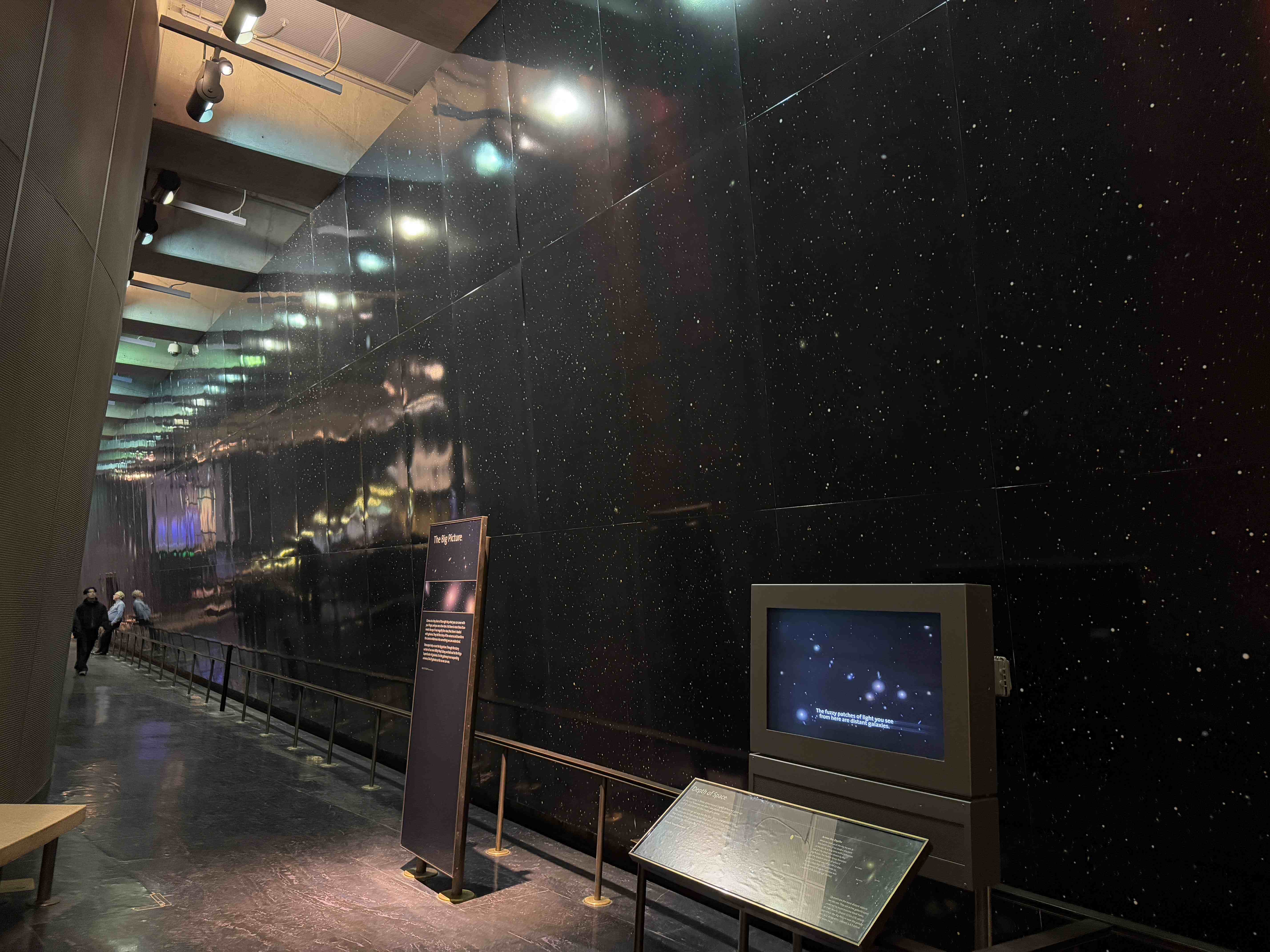
There is a giant wall on one side of the lower level of the observatory. All over the wall are stars and galaxies. Visitors often mistake this as some kind of wallpaper or design work, but it’s not — it’s a picture.
And not just any picture, it’s the largest astronomical image on display in the world. Taken as a composite image at the Palomar Observatory near San Diego, the image shows hundreds of thousands of stars and a million galaxies.
9. Exoplanet tote board
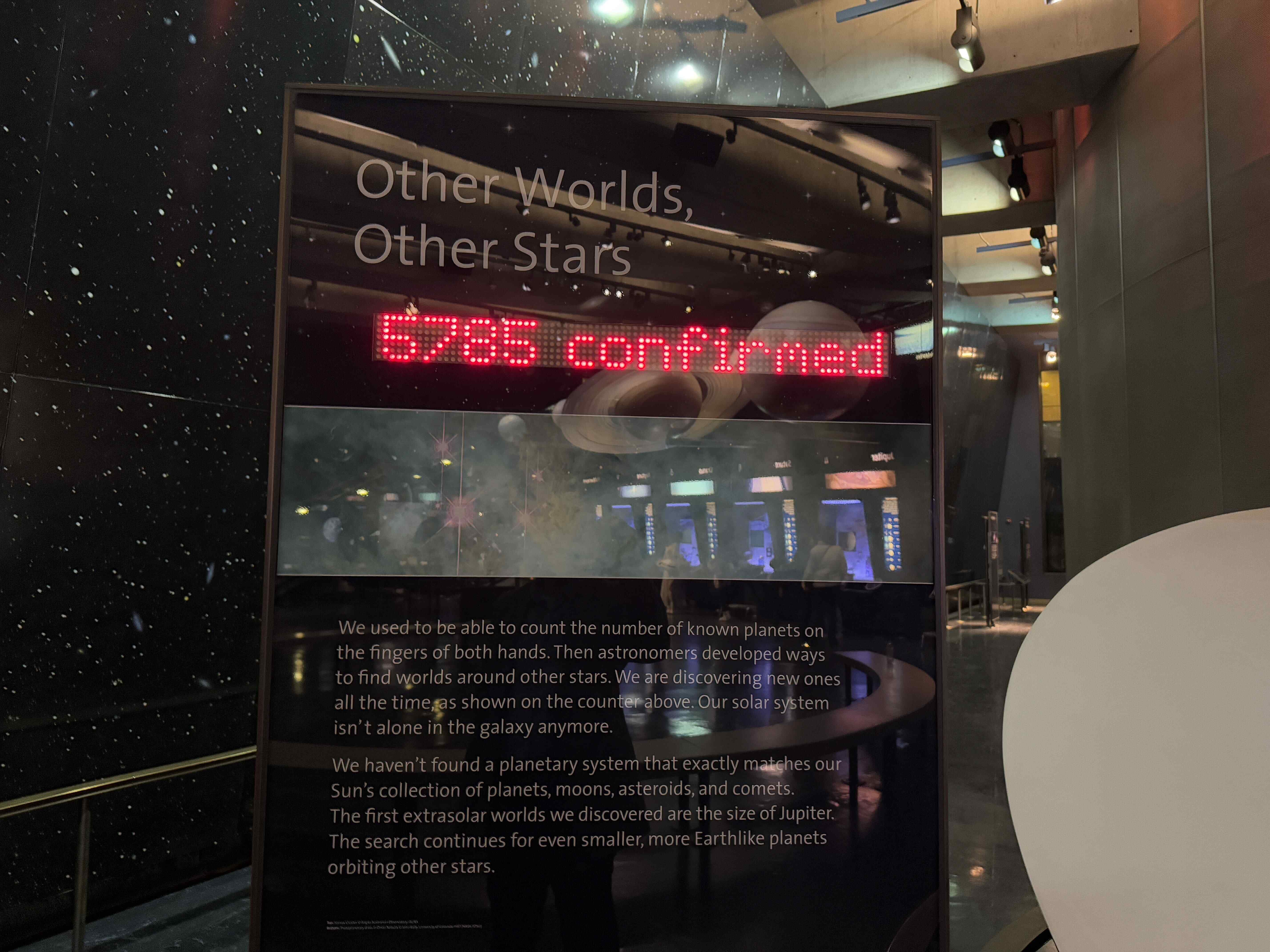
Our sun is actually a star with eight planets orbiting it. An exoplanet is a planet orbiting another star. When astronomers confirm the existence of new exoplanets, they get added to the total on the sign.
As I write this, the total number of confirmed exoplanets discovered is 5,785. However, scientists estimate that there are well over 100 billion planets in our galaxy — and billions of galaxies in our universe.
10. Seismograph
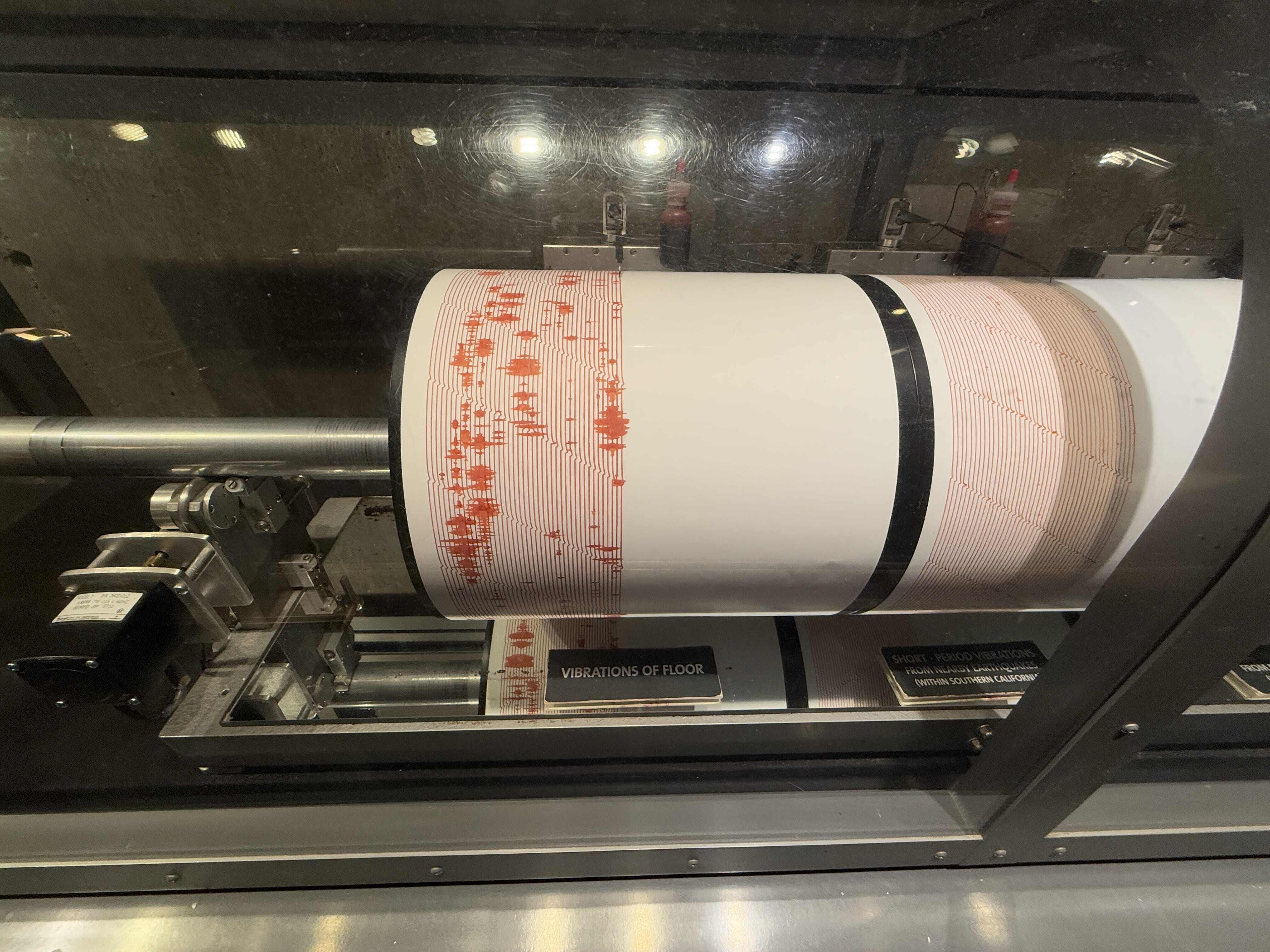
Downstairs you can see all of the planets lined up next to each other. If you walk under the Earth, you will find our seismograph measuring seismic activity underground. Los Angeles is known for having earthquakes since it is so close to the San Andreas fault. Small earthquakes are happening all the time. While we can’t feel these small seismic shifts, we can measure them.
It takes a very sensitive instrument to take these readings, and to show just how sensitive these instruments are, one of the three needles taking readings is measuring vibrations in the floor beneath your feet.
Jump up and down while watching the needles and you’ll see it move. Congratulations — you’ve just made an earthquake!
11. An authentic moon rock
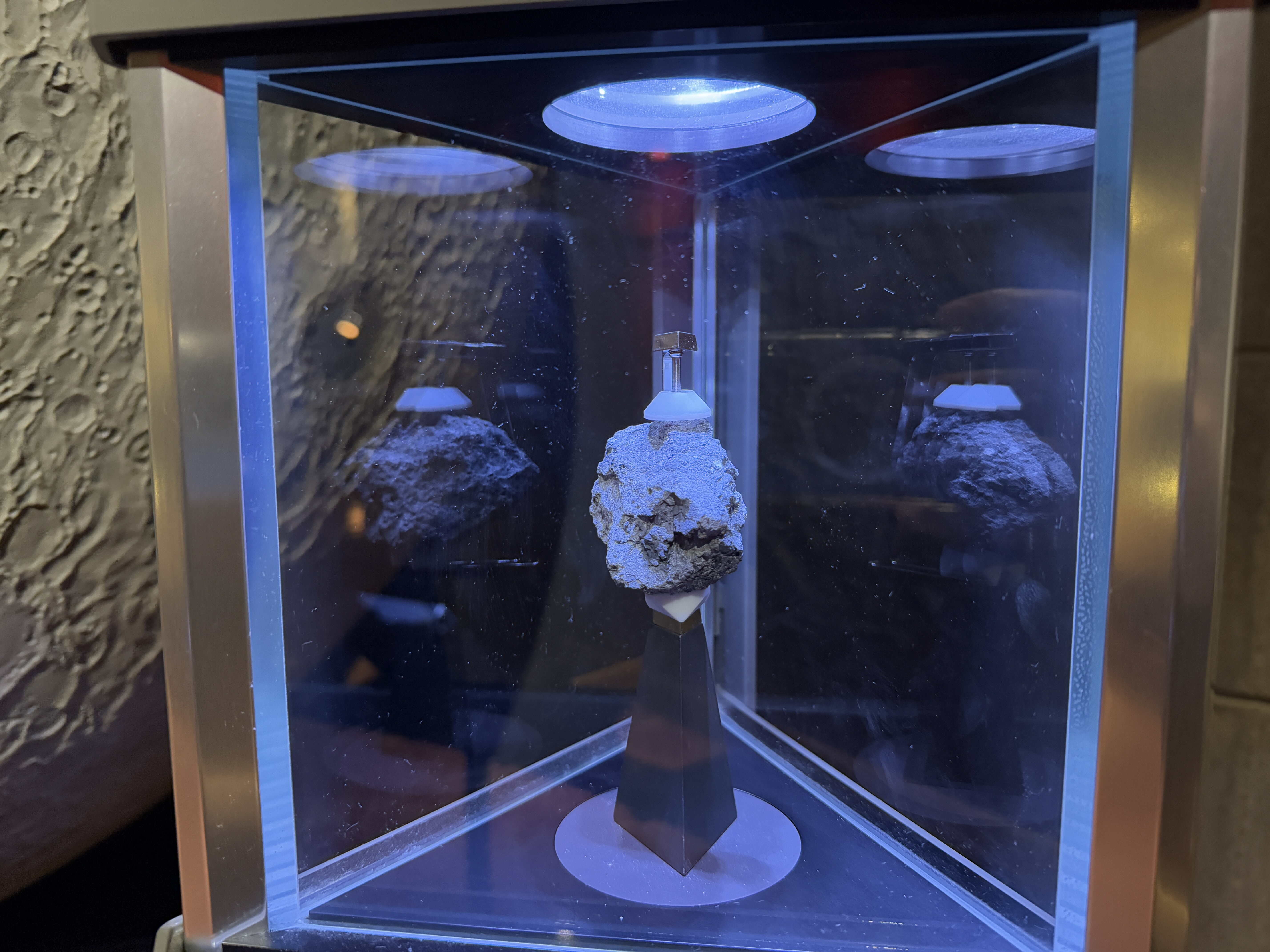
Located on the east side of the Edge of Space level downstairs, and next to the entrance to the Leonard Nimoy Event Horizon Theatre, you’ll see a big globe of the moon. Next to it, ensconced in a small glass case is a piece of another world.
The Apollo astronauts brought back close to 900 pounds (~410kg) of moon rock. Griffith Observatory has one of these pieces on loan and on display.
12. The planets at scale
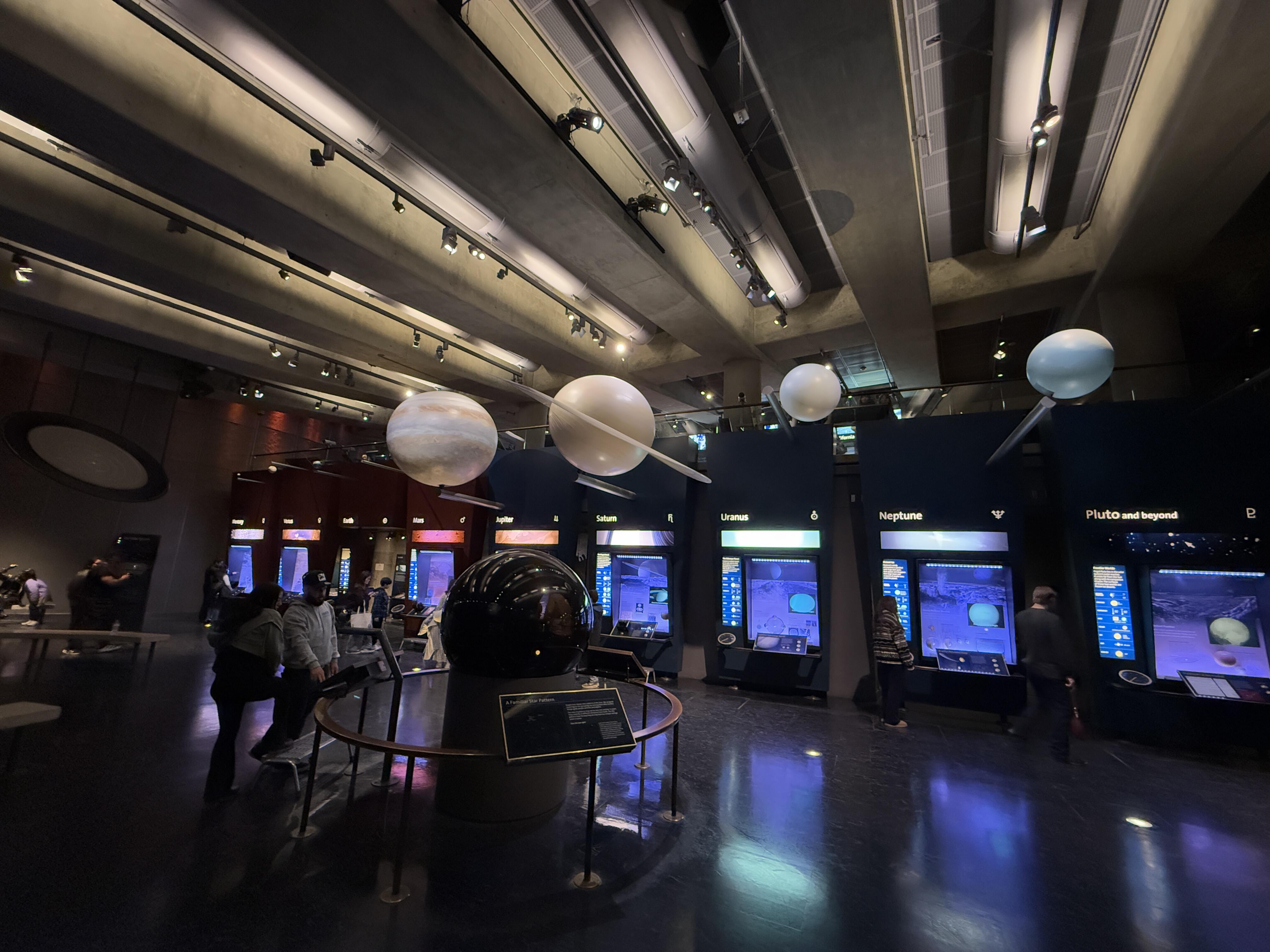
In the Depths of Space level, or the lowest level of the observatory, you will see all the planets lined up next to each other, sized to scale relative to each other.
Under the planets you will find a scale where you can see how much you weigh on each planet. Since the more massive an object is the more gravity it exerts, it’s best to try this on the smaller planets which are less massive. So you will weigh less on Mercury and Mars than you do on Earth.
The opposite is true of much larger and more massive planets like Jupiter and Saturn. Don’t be surprised at the large numbers — you’ve been warned.
13. Coelostat AKA the solar telescope

The western dome holds Griffith Observatory’s solar telescope — or coelostat. Inside and to the far end of the building’s western wing, called the Hall of the Sky, is where you can see a live projected image of the sun, our closest star.
It’s a safe image to look at. If you see spots they are not blemishes on the lens or screen, those are sunspots. While they might look like small dots compared to the rest of the sun, the sun is so big that our entire planet could fit inside of one of those “little” spots.
14. Why seasons change
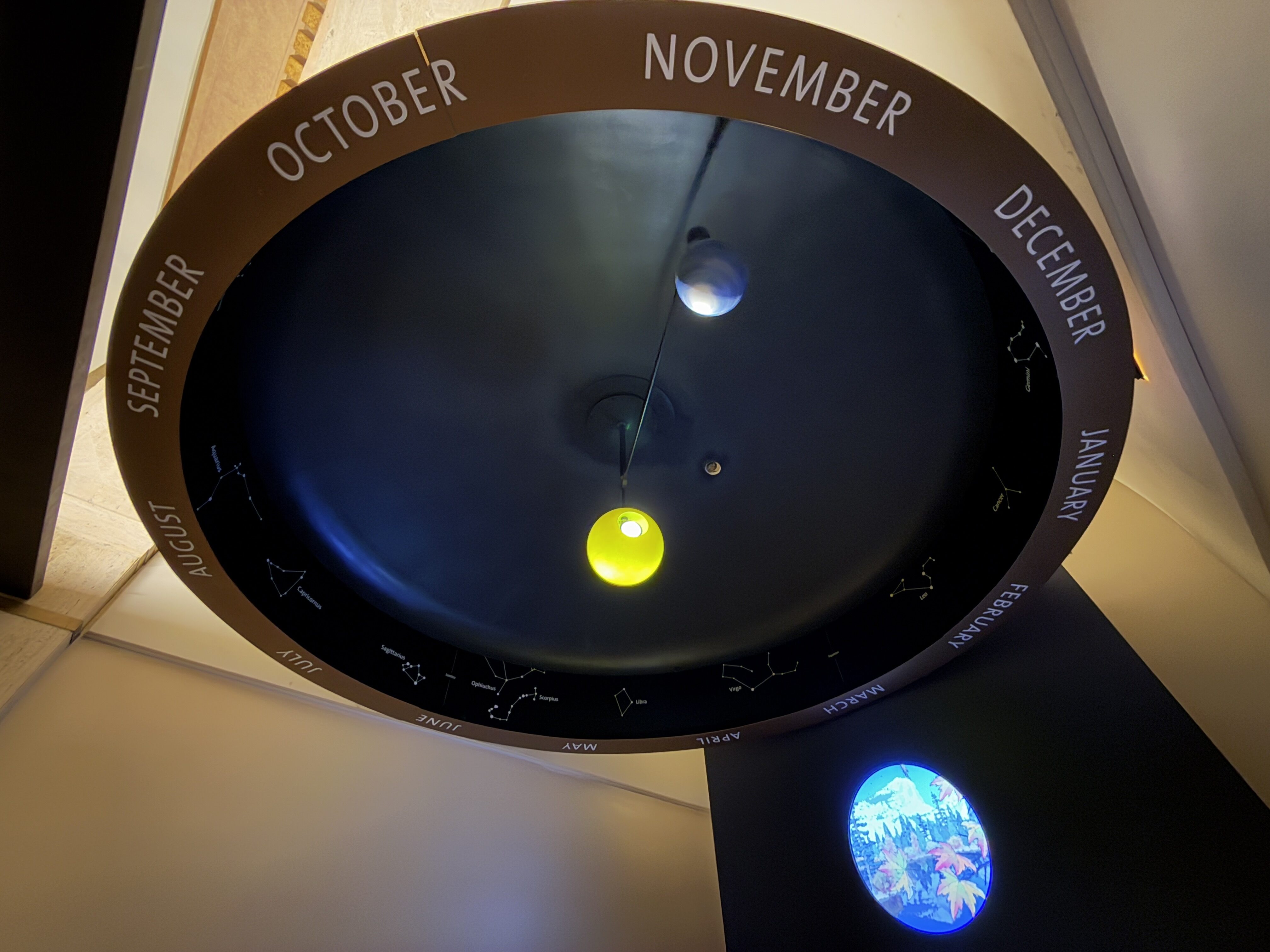
The Hall of the Eye has some interesting exhibits. A personal favorite of mine is the one showing how the seasons change. Here you can see the Earth revolving around the sun. As it orbits, the tilt of Earth’s axis remains the same, resulting in a different pole angled toward the sun at different times of the year.
This angle causes longer and warmer days in the summer and shorter, colder days during the winter. Whichever season we are experiencing in the northern hemisphere is the opposite of what is happening in the southern hemisphere.
15. Light spectrum
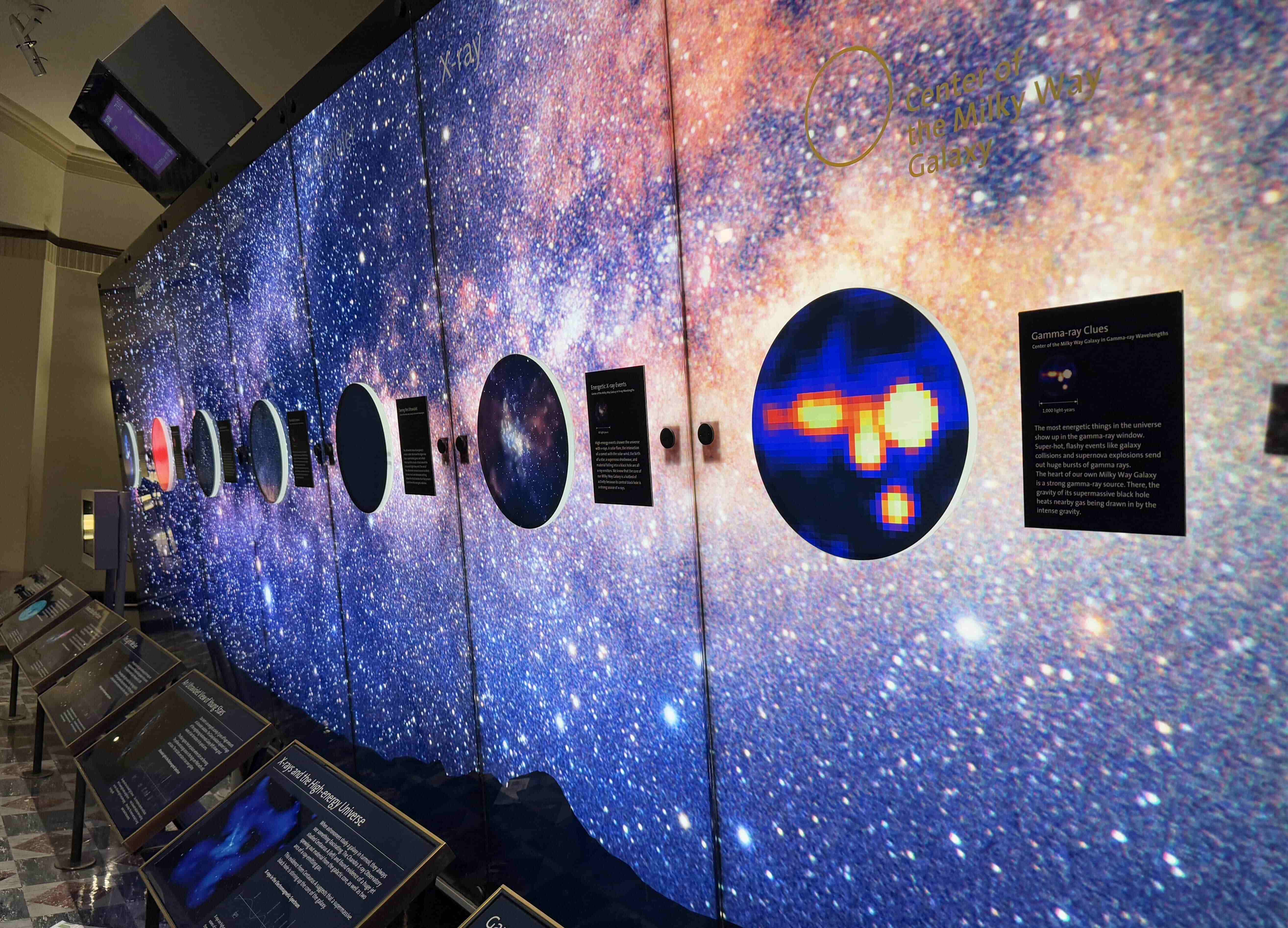
As humans, we only see a very small portion of all of the light in the universe. It all depends on the wavelength of the light rays. Gamma rays and X-rays have a wavelength that is too short for our eyes to detect, while microwaves and radio waves are too long. This display shows us how all of this works and why it’s useful for astronomers.
For instance, the new James Webb Space Telescope detects infrared light, which has a longer wavelength than light our eyes can see. This allows astronomers to see things farther away than ever before. While checking out the display, remember to look up because there is a monitor where you can see what you look like to an infrared camera. Fans of the 1980s action movie “Predator” will get a kick out of this one.
16. Leonard Nimoy Event Horizon Theatre show
You won’t need a ticket for this one, but be sure to keep an eye on the time. Every hour on the hour, the Leonard Nimoy Event Horizon Theater opens its doors allowing visitors a chance to see a free, half-hour documentary called “Pacific Standard Universe,” exploring the myths and legends of the night sky from the perspective of the indigenous people of North America.
Fun fact: The theater has recently undergone a major renovation updating the sound and installing a new 4k screen to enhance the viewing experience.
How to get there
There are two roads leading up to Griffith Observatory: Vermont Avenue and Fern Dell Dr. Vermont avenue is the most direct, though often the more congested of the two.
Speaking of congestion, Griffith Observatory does not have a large parking lot. Once full, visitors will have to parallel park along the hillside road and walk up.
Parking anywhere in the lot or along the road costs $10 per hour. Instead of parking, we recommend you take an Uber or other ride share. You can also take the DASH bus for 50 cents, or 25 cents for seniors and disabled. If you are driving up, make sure you leave enough time to park if there is anything time sensitive that you want to see.
More about Griffith Observatory

Why is it called Griffith Observatory? The namesake of the observatory and Griffith Park was a man called Griffith J. Griffith. Born in Wales in 1850, Griffith eventually made his way to California where he made a fortune in the mining industry. He moved to Los Angeles and purchased a huge plot of land, 4000 acres to be exact, known as Rancho Los Feliz. In 1896, he donated the entire 4,000 acres to the City of Los Angeles, and it was renamed Griffith Park. After passing away, he left a large portion of his money to build the Greek Theatre and Griffith Observatory.
The reason Griffith specifically wanted to build an observatory has to do with Mount Wilson Observatory. This is where Edwin Hubble, the astronomer that the Hubble Space Telescope was named after, made groundbreaking discoveries, such as the fact that the universe is expanding. When Griffith, as a man of means, went up and looked through the telescope, it had a profound effect on him. He once said, “If all of mankind could look through that telescope, it would change the world.”
As a working observatory, the telescopes at Griffith Observatory are strong enough to see the rings of Saturn (if it’s out), though they aren’t as strong as the telescopes at Mount Wilson, let alone the Hubble or the new James Webb Space Telescope.
Griffith Observatory also functions as a space and astronomy museum. It does this through displays, diagrams, interactive exhibits, shows, and more, just some of which I’ve listed above.
See the best Griffith Observatory exhibits with a guide
If you want to see all of this and want an expert guide to show you around, tell stories, and really help you understand what you’re seeing, take our guided tour of Griffith Observatory. It makes Griffith Observatory not just a place with cool exhibits but a truly immersive experience, and our tour is designed by former observatory staff, so you know you’re getting a true insider experience.